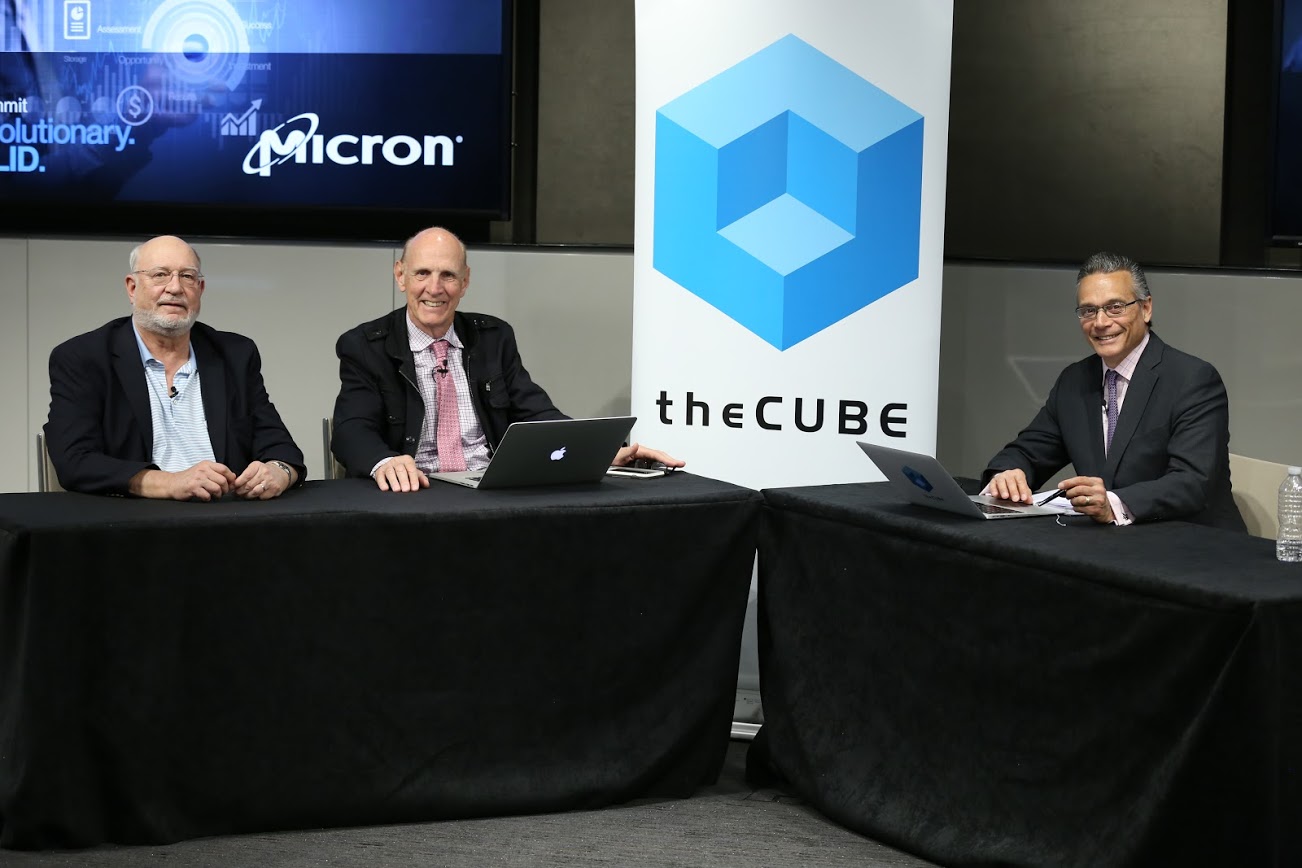 INFRA
INFRA
 INFRA
INFRA
 INFRA
INFRA
With news of Micron Technology Inc.’s new flash storage architecture for NVMe over Fabric, some of the most important points regarding the realities of its adoption and integration could easily be lost in the cloud of hype and speculation. According to industry experts, the developer community could play a crucial role in the adoption of Micron’s latest innovations as it rolls out more software-integrated products and encroaches on the market share of its very own suppliers.
To sort out the hype from reality, Dave Vellante (@dvellante) and David Floyer (@dfloyer), co-hosts of theCUBE, SiliconANGLE Media’s mobile live streaming studio, sat down with Nick Allen (@stor2), Wikibon analyst, during the Micron Summit in New York City. There, they began to dig deeper into the details of Micron’s business workings, the potential for NVMe and where they see some of the biggest challenges waiting for Micron. (*Disclosure below.)
An early talking point centered on the way in which Darren Thomas, vice president of the Storage Business Unit of Micron Technology, had recognized and attempted to defuse concerns from Micron’s customers and partners that the company might be trying to directly compete with its suppliers.
While the steps to Micron’s current rolling out of NVMe over Fabric were founded on their alliances with select partners, Mellanox Technologies Ltd. being a key player, Micron may have leveraged itself to a position where not all of those partnerships are necessary, Floyer stated.
“Enterprise, to a large extent, has been on the coattails of the consumer,” Floyer said. And while most of the end-user market may see Micron’s provisioning of this new architecture as a flipping of that standard, the partners who helped Micron up to this point may not agree.
And as the presence of NVMe widens, there’s anticipation that most of the efforts to provide a flash alternative will simply wither on the vine. “There’s going to be some bleeding-edge users that adopt [flash alternatives], but without the volume from the consumers, it’s just not going to compete on price,” Allen said.
In an examination of the technical impact of NVMe, the analysts picked at some significant benefits and troubles. Floyer highlighted the “very, very low latency” and the high speed fabric over which data would be sent, with the projected goals of bringing I/O latency “down to the five microsecond overhead. … That changes the whole architecture,” he said.
Looking at some of the more obvious disadvantages, ambiguity of cost popped out as a big question, with a dearth of information on how much Micron was expecting adopters to pay for this architectural redesign. The rise in shipping flash as a storage option was another point raised, though the benefit to Micron in that situation was clear.
“To me, it’s all about the developers,” said Vellante. “I would bring those guys in early to the conversation, and then have my architects sit with them … and then figure out all the technology integration activities that I need to do.”
Far too few businesses understand the value of data, Vellante added, “let alone understand how data supports the monetization strategy.”
Floyer agreed, pointing out that it’s now not too far outside the realm of reason for a data-focused company to “assume that you can get any data that you want and then start with that as your design point.”
But where Floyer saw the most important point for the architecture was in the ecosystem. “I think the most important thing is to allow other people into this ecosystem so that they can combine and add value together. … The power of any architecture … is getting that ecosystem as rich and as open as possible and able to contribute and make money by being in that ecosystem,” he concluded.
Watch the complete video interview below, and be sure to check out more of SiliconANGLE’s and theCUBE’s independent editorial coverage of Micron Summit 2017. (* Disclosure: TheCUBE is a paid media partner at the Micron Summit. The conference sponsor, Micron, does not have editorial oversight of content on theCUBE or SiliconANGLE.)
THANK YOU